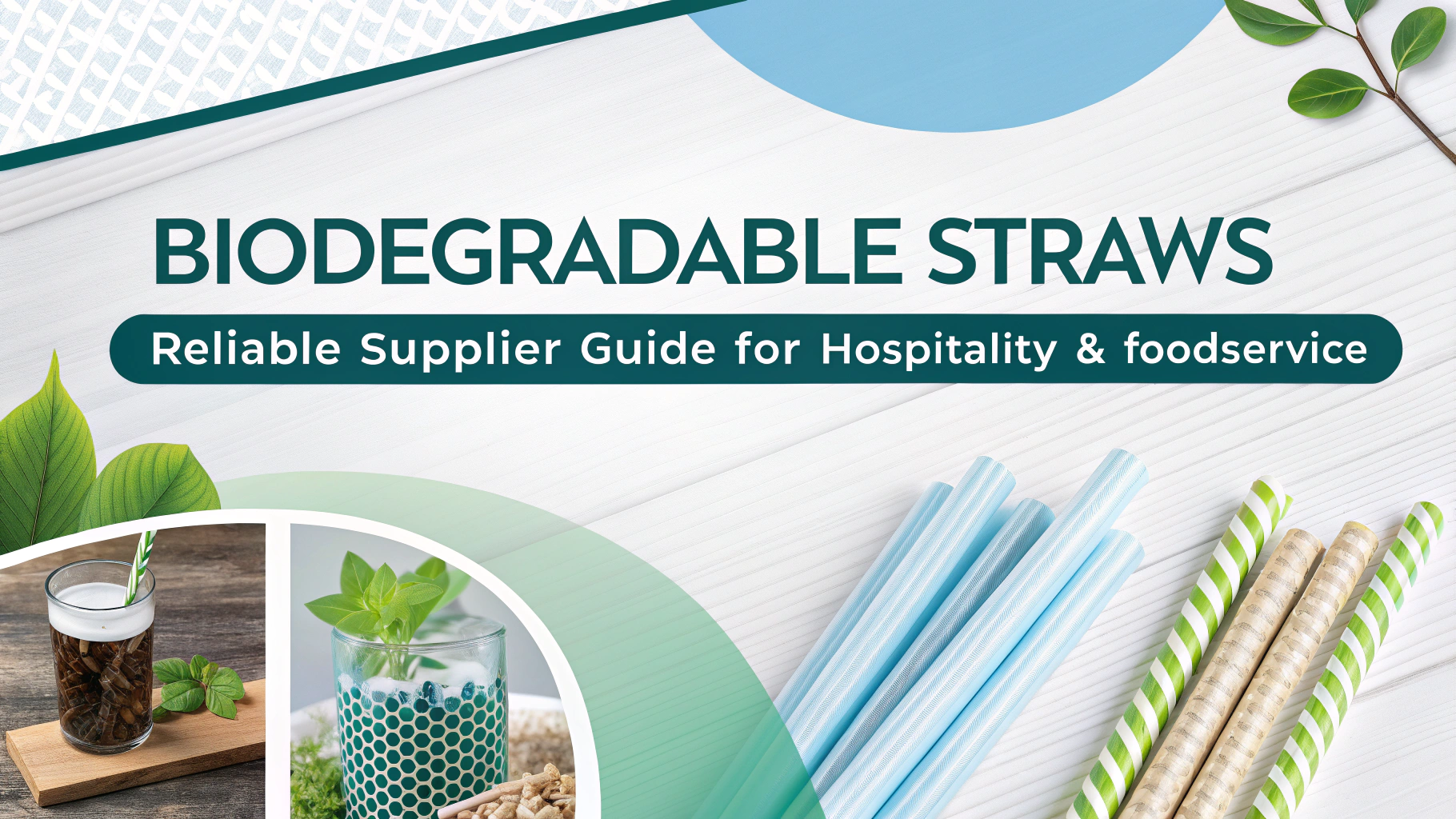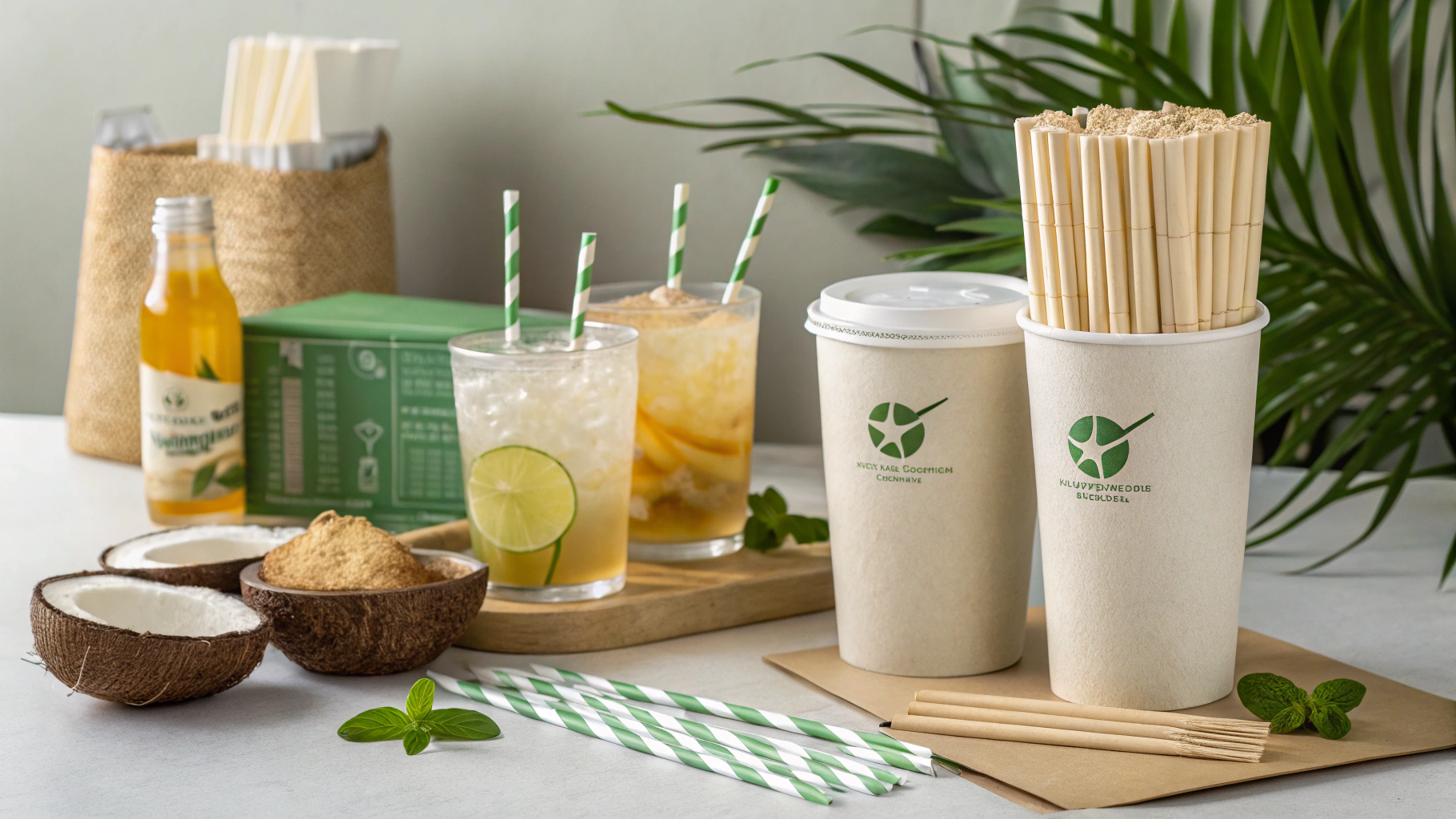
Today, there is no dispute that plastic straws are seriously damaging our planet. For example, in the United States alone, a shocking 5 million plastic straws are used and discarded each day. That’s enough straws to circle the planet two and a half times every day! These straws litter our streets, land, coastlines, and oceans. Plastic drinking straws are one of the top ten contributors to marine debris pollution. They cannot be degraded, but only broken down into smaller microplastics that enter our food chain and the deepest parts of our oceans. It’s time to ban these harmful disposable straws and switch to eco-friendly plastic straw alternatives.
For this reason, we conducted an in-depth study of the various straws on the market to find some suitable straws to replace plastic straws.
Fortunately, we have a wide variety of straws for these.
Naturally Degradable Straws

These plastic-free straws are undoubtedly the kindest to our planet. Biodegradation is a truly natural process that does not require artificial involvement, which means that normal conditions will cause the material to decay and become part of the natural environment.
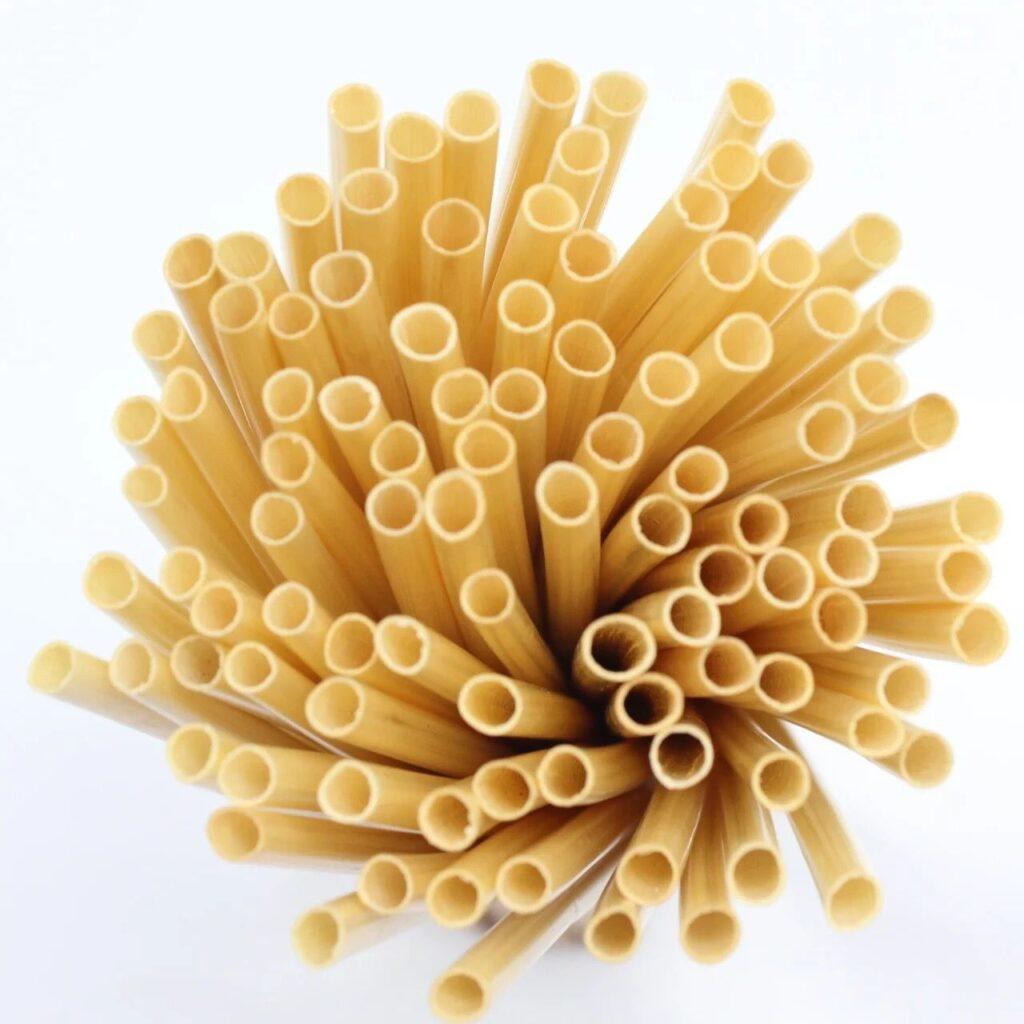
Wheat Straws
Wheat straws are made from 100% natural materials: they are made from the stem of the wheat plant. This material is usually considered waste in agricultural production, so converting this “waste” into straw saves natural resources. Throw away the used straws and they will disappear naturally in a few months. Non-toxic and biodegradable, they are a safe and environmentally friendly disposable alternative to plastic straws. Wheat straws are perfect for hot or cold drinks, and they are also praised for not getting soggy.
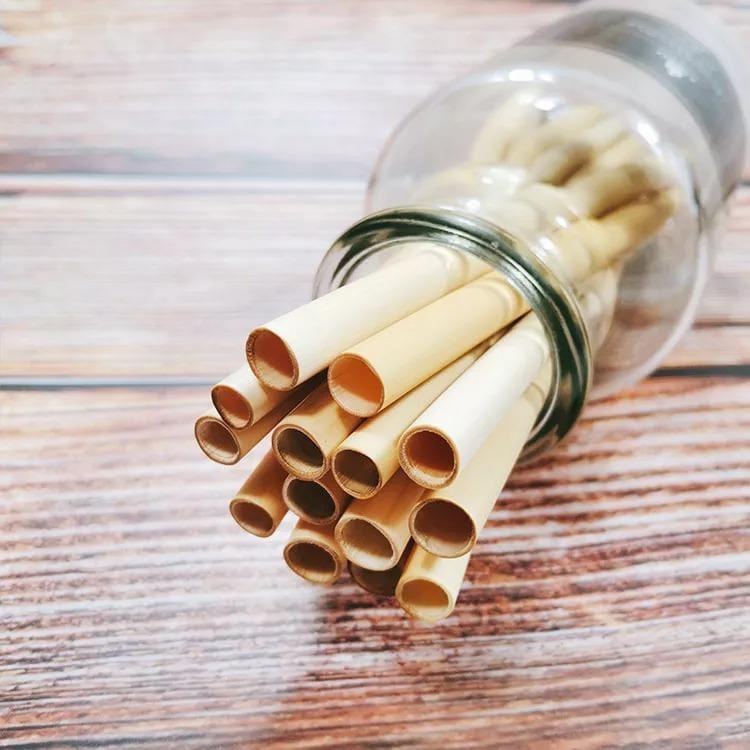
Canudos de Bambu
Bamboo straws are a great alternative to plastic straws. It is a natural material that grows in abundance in most temperate climates. There are many benefits. For example, it is completely organic, non-toxic to humans and the environment, biodegradable, compostable after use, has good antibacterial properties, does not bend, and is reusable. At the same time, bamboo straws aren’t something you’re going to use for the rest of your life. Even if they are washable, they will get dirty over time and have irregular diameter openings. In addition, bamboo absorbs flavor and is prone to cracking.、

Palhinhas de Cana
Sugar cane straws, like wheat straws, are produced from agricultural by-products, specifically from recycled sugar cane residual fiber, and it is very good for our environment. It is the safest, most effective, and environmentally friendly disposable alternative to plastic straws. They don’t get dirty, they don’t go to waste, and they are carefree, plastic-free, and taste-free. They can only be used for drinking, not for eating or digesting. Sugar cane straws can serve hot and cold drinks, as well as very strong beverages such as smoothies or fresh juices. Sugar cane straws are one of the best alternatives to plastic straws because.
Soggy-free
100% compostável
Gluten-free
Taste-free
Plastic-free packaging
Biodegradável
Avage Straws
The new straw is made from an agave bio-based composite, a sustainable, 100% natural, plant-based straw. It replaces approximately one-third of the polymer used in traditional straw production and at the end of its life cycle, can be engulfed by microorganisms and completely biodegrade under landfill conditions within one to five years.
This is a significant improvement over ordinary plastic drinking straws, which take a considerable amount of time under the same landfill conditions. Not only can it be used as an alternative to plastic, but it also reduces dependence on petroleum-based polymers, fossil fuels, and water for the production of straws at the same time. Straws made from agave have a similar taste and texture to traditional plastic straws, with the agave fiber clearly creating a natural, organic tan color. One of the best features of agave fiber straws is their sturdiness! It stays in the drink for up to 6 hours and is extremely strong.
Canudos PHA
PHA is a form of polyester created and stored by bacteria during the fermentation of sugar or fat. When used in bioplastics, PHA can withstand higher temperatures than PLA. Today, you will find PHA in food packaging, agricultural products, and medical devices. as a result, PHA is also widely used to make straws. These straws are compostable in both domestic and industrial settings, but still, have the “traditional plastic straw feel and user experience. The current cost of PHA is relatively high and market acceptance is relatively low.
Canudos de papel

In many countries where plastic straws are banned, paper straws are used most frequently. Are paper straws really better than plastic straws? Definitely yes! Paper is a material that comes from renewable resources and it biodegrades easily and quickly. Therefore, used straws do not enter the ocean and do not harm any living creatures. Paper straws are also inexpensive, so they are used in many occasions. However, people who like to drink large drinks do not like paper straws because they easily get wet over time, significantly lack durability, and have an unpleasant pulpy taste. In addition, paper straws use glue and ink, and whenever you think about it, you get an uncomfortable feeling in your heart.
Canudos para macarrão
A 100% biodegradable pasta straw is basically a flat, uncooked pasta tube. But this type of pasta looks a little better than regular pasta. One can pound with them without damaging them. However, these wheat and water straws are not suitable for people who are gluten intolerant. They are also vegan and can be easily resized to fit any drink, which is perhaps a good option when you are serving kids. And if you leave them in liquid too long, they can get soaked and sloppy. Also not recommended to use them for hot drinks.
Apple Fiber Straws
The fairly new straws on the market are made from apple pomace, a residue from apple juice production. Other all-natural ingredients may be added for more stability. They are edible after use. After about 60 minutes, the straws start to soften. They taste a bit like apple-flavored pectin, which can also be a drawback because not everyone likes the apple flavor in his cocktail or cola.
Lemongrass Straw
Lemongrass can be used as a straw. The stems are hollow and have many layers. One lemongrass stem can make up 5 or 6 straws. They can be used fresh or dried. They are very cheap, especially in areas where lemongrass grows. They go well with juices and cocktails. Some people may not like the lemon flavor it brings.
Papaya Leaf Stems Straw
Papaya straws are also an all-ecological straw, creating a biodegradable product from plants and one of the solutions to maintain a sustainable ecosystem. If handled, packaged, and stored properly, papaya straws have a shelf life of over 6 months.
Rice Straw
These biodegradable straws are truly made from 100% natural ingredients! Although different manufacturers have different formulas, they are basically made from rice flour, tapioca starch, and water. No chemistry is performed to obtain a strong structure. They can be put in the garbage, compost bin, or even used as food for fish. Eco-friendly straws biodegrade in landfills in 100 days and in seawater in 7 days. They are odorless, do not break easily, and are stable in liquids for up to 2 hours. Free of BPA and toxic substances. Rice flour straws are a real product that is good for nature, animals and marine life.
Canudos moídos de café

Coffee grounds are very common in coffee spots. But usually, it is thrown away as garbage. This can easily cause pollution. According to incomplete statistics, people around the world drink about 2 billion cups of coffee every day, producing 6 million tons of waste coffee grounds every year. If it can be used for waste, it is really a double whammy.
The “new coffee grounds straw” has a new “upgrade” compared to paper straws because it is a tougher material. Not only is it very strong after long-term immersion, it will not soften in the cup and can be kept for a long time, over 7 hours without disintegrating. Coffee grounds straws are suitable for cold, hot, carbonated drinks and cocktails, are more resistant to stirring, and won’t stick in your mouth and suck up large fruits. The particles are smoother.
Canudos de vidro

Glass straws are odorless, give a great drinking experience, and are absolutely harmless to health. This is because the surface of the glass is extremely smooth. This also makes the glass straws very easy to clean. And you can see if it is really cleaned and looked clean. There is no need to wonder if there is any residue hidden inside the straw. Glass is a good conductor of hot and cold liquids and can maintain a similar temperature to the drink.
Being dishwasher safe, being free of heavy metals, lead and BPA as well as being easily recyclable with glass waste without loss of quality are all clear advantages of glass straws.
Because the materials used for glass straws vary greatly, you should make sure you buy a higher quality straw so that it will not break even if you are not careful and drop it from a high place. It is also important to pay attention to the ends, as bad products run the risk of cracking and damaging your mouth.
Stainless Straws
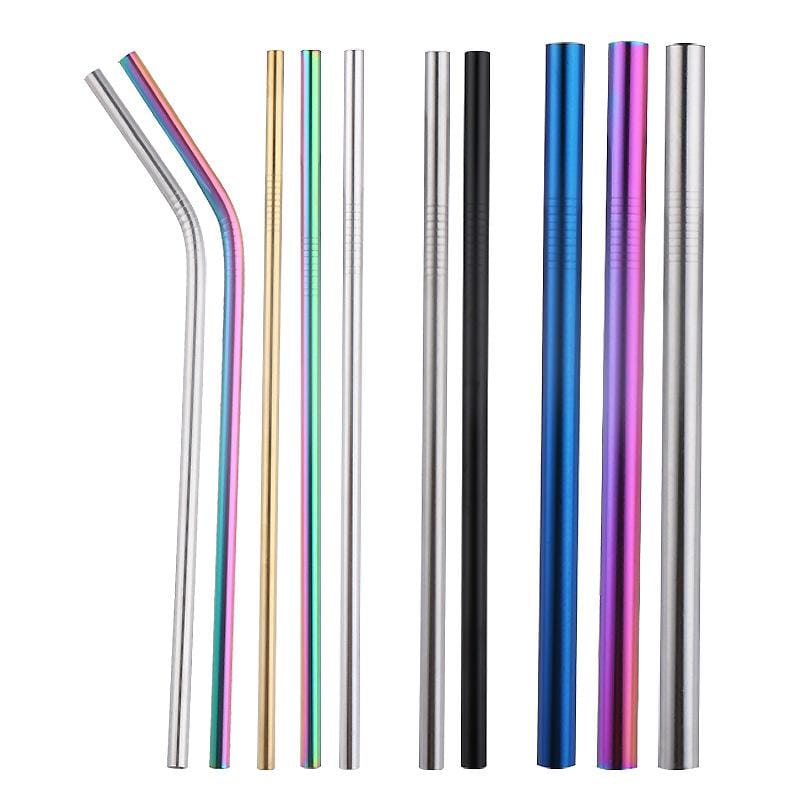
Stainless steel straws are environmentally friendly, BPA-free, and although they can have a metallic taste when first used, they are safe for your health and the environment. As one of the most durable alternatives to plastic straws, these straws are permanently reusable. They also prevent any transfer of taste or odor, so you can reuse your straws for different drinks, just make sure you clean them afterwards. Since it is a relatively fast heat-conducting metal, you should be careful of burning your mouth and tongue when drinking hot beverages. Also stainless steel straws are not as transparent as glass straws, so you never know if they are cleaned inside.
PLA Plastic Straws
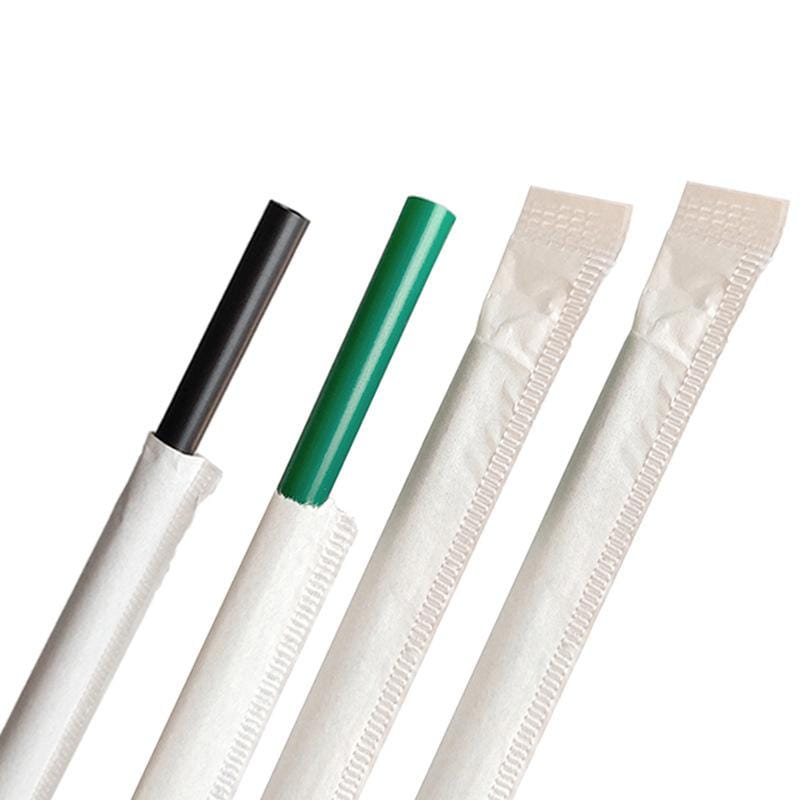
PLA straws are a step up in terms of environmental friendliness compared to traditional plastic straws. PLA straws require 68% less fossil fuel material to produce and can be commercially composted for fertilization. This is good news for the preservation of the planet. And they are transparent, function and feel the same as plastic straws.
But his drawbacks are also obvious. Although PLA straws can be composted commercially. But as is often the case, straws are discarded at random and there is no control over their recycling. PLA can only be completely decomposed under very specific circumstances, and if in a natural environment, it will take 100-1000 years to degrade and will be as harmful to the environment as other plastic straws.
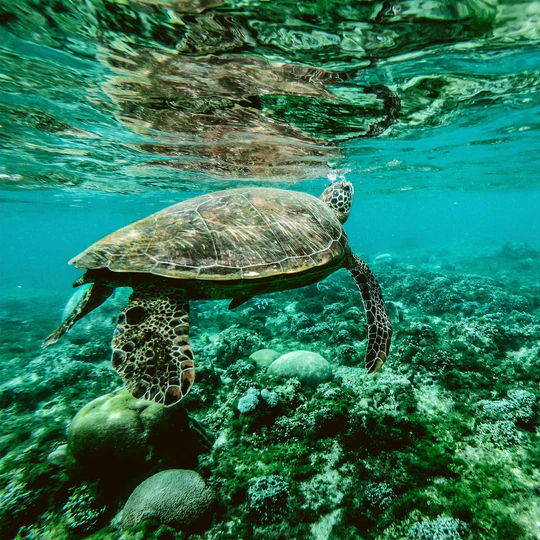
Let’s use one less plastic straw every day and one more eco-friendly straw to make a small contribution to the green of the earth.
Momoio is focus on supplying ECO-Friendly Straws. Please contact me to get quotes, free samples or more information freely.
E-mail: 1@momoio.com Contactor: Ching Chiang


